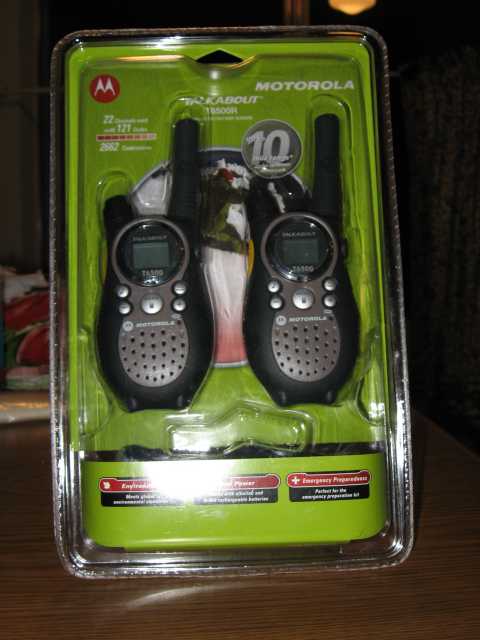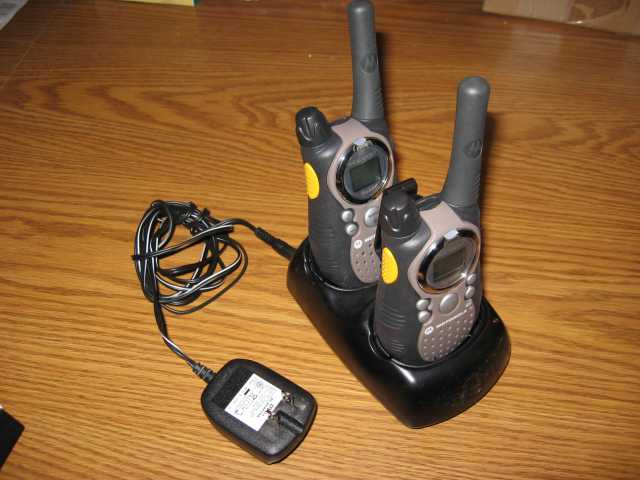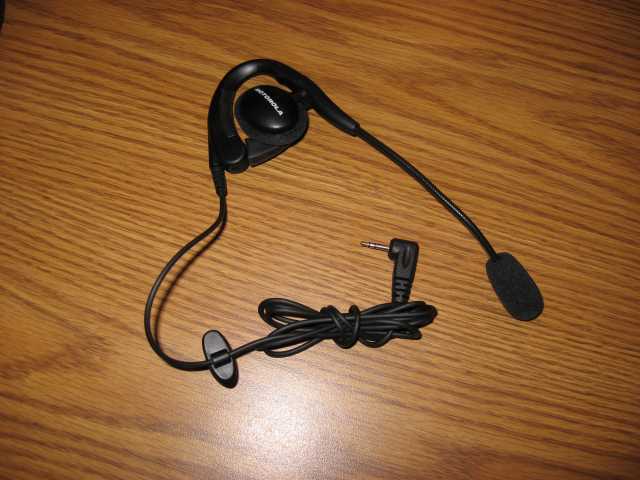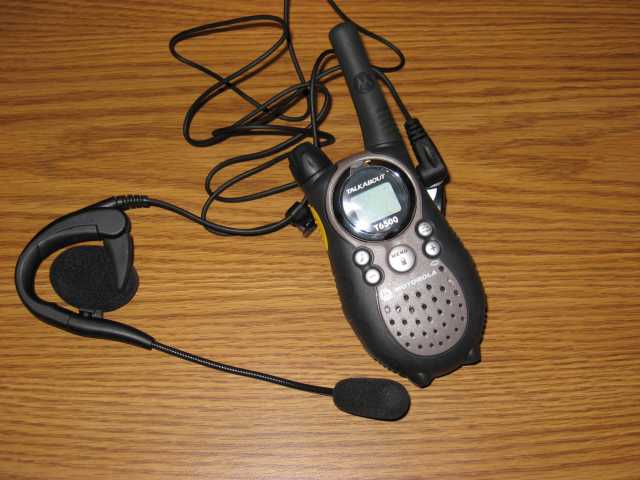Much as been written in regards to personal communications in today’s technology driven age. Cell phones of every shape, size, and function seem to pop up faster than anyone can count. They fill a need (real or imagined) and so people have them. The same can be said for small two way radios. The FCC created Family Radio Service (FRS) for the general public some years ago and manufacturers have flooded the market with radios of all types. The prices range from dirt cheap to somewhat expensive and offer the buyer all types of features and functions.
I found myself looking for some relatively inexpensive two way radio communications a while back and finally decided on a Motorola product. Motorola has been in the radio business almost since radios were invented (not quite but close enough). They have arguably lead the industry in the two way radio business for decades. I opted to get one of their offerings as I felt confident that I would get a reasonable product for the money I was looking to spend.
This review hopefully provides you with more information than what you would typically find on the back of the clamshell package.

I made my purchase at the local Cabela’s sporting good outlet in Glendale, AZ. The two-pack was on sale for $59.99.
It claims a range of five miles (which in my opinion is optimistic) and it has 22 channels with 99 privacy codes for clear, uninterrupted communication. (that I like) Ten audible call tones and a VibraCall® alert identify incoming transmissions. Motorola’s IVOX voice-activated operation makes for easy hands-free use. (more on this later)
With one watt of power, these radios also have a QT™ noise filter to eliminate interference from signals sent by non-Motorola users. And the NOAA weather alert function warns you of severe weather in your area. I purchased the rechargeable model which operate on a ni-cad battery pack (included) and includes a dual-port desktop charger. You can pop out the 3 cell battery pack and load the radio with 3 “AA” alkaline batteries which keeps you from being “charger dependent”. While I can easily plug the charger into the 110V power inverter in my TJ, I won’t have to worry about forgetting the power cable or recharging stand when I run out the door for a weekend trip. A half dozen batteries in the glove box will keep me running through the weekend without a problem.
So what all do you get for your $60 investment?

After freeing the contents from the clamshell package, you will find two radios, two spare face plates, a charging base (with power module) for both radios, two rechargeable batteries, a detachable belt clip for each radio, and a pretty good set of user instructions.
There are no restrictions against purchasing this radio. However, before you use it, you will need to contact the FCC to obtain a license. FCC website: www.fcc.gov This radio is intended for private use and is not for use as a Commercial (Business Band) radio. Please keep all of this in mind prior to purchasing and/or using the radio.

First on the list was getting the batteries charged. The instructions state a 16 hour session with the charging station is required before using the radios. Say what? No way! I wanted to play with these things a bit. So I cheated…..with three “AA” cells pushed into the back of the radio, I was able to satisfy my initial curiosity before calling it quits and letting the charger take over for the night.
The “docking” within the charging base is a little loose….enough that you can drop the radio into the base but not make electrical contact with the charging points on the back of the radio. However….each bay in the charger has a red LED to indicate when the radio is charging. A gentle nudge on the radio while watching the LED makes it pretty easy to get the charging function going. This is certainly not a show stopper by any means unless you planned on charging the radios in a moving vehicle….in which case, bumps and vibrations might very well cause the electrical circuit to be interrupted and so stop the units from fully recharging.
Motorola T6500 FRS/GMRS Radio

Of course, Cabela’s didn’t have the one and only accessory I wanted when I purchased the radios so I fell back on the internet and found an on-line merchant who carried the headset/microphone unit I wanted to try. The price on these is about $17 each (half the price of one radio) but I am happy to report that it works quite well.

The headset plugs into a port (normally protected by a small rubber plug) on the radio. The headset is configurable to be worn on either side of the head. It slips over the ear and has a retainer that gently wraps up under the ear to help keep it in place. The microphone can be position quite easily and retains its position well…..which is something I noticed that not all “boom mics” are good at doing.
To run the radio in “hands free” mode, where your voice controls the radio’s transmit function, plug the headset into the port and then power on the radio. Assuming you have another radio set on the same channel and privacy code, you speak into the microphone to cause the radio to transmit. While this works quite well, and you have the ability to select from one of three mic sensitivity settings, it takes the radio about a second to switch from receive to transmit. This means that if you were going to say “Turn left at the next intersection”, the person you are talking to might only hear “next intersection”.
One way around this problem is to start each transmission with a “throw away” phrase…..”Hello Radio…..turn left at the next intersection.” If you do this, the party you are talking with will most likely hear “turn left at the next intersection”…..the built in delay sacrificed the “Hello Radio” phrase to the radio gods and your friend heard the important part of your transmission.
At the end of the transmission, when you stop speaking, there is about a second delay before the radio automatically switches back into receive mode. You can configure the transmitter to send a “beep” when ever it stops transmitting….and so both of you will hear a “beep”. This lets the other person know you are done and that they can start talking. Of course, they need to start with a “hello radio” at the beginning to allow their radio to switch over to transmit too. If they are not using a hands free headset, then that won’t be a requirement for them.
This may all sound like a pain in neck….and to some degree it is. Of course, you can simply just press the yellow “push to talk” (PTT) button on the radio to instantly turn on the transmitter. Using the PTT button skips the leading and ending delays that the hands free mode creates.
I won’t go into great detail in regards to navigating the radio’s “programming menu” but I will say that I found it very easy to use. There are a couple of odd keystrokes that turn a feature on/off but for the most part, it was very simple to use. About 5~10 minutes with the user instructions and radio made me quite confident that I could set up most anything I needed.
I was pleased to see that a privacy code could be assigned to each frequency channel. This makes it nice when you change channels…..the privacy code used by a friend or family member can be pre-assigned to that frequency and so the entire process of changing channels just got a bunch easier. Of course, you could use the same privacy code on all of the channels…..but that may not work if you are talking with a group of folks in your 4×4 club that use a specific privacy code on the “clubs” trail channel. Anyway, it’s easy enough to do and that is what is important. Likewise, we you get everyone done, you can lock the keyboard and so prevent accidental “button pushing” which might lead to a mis-configured radio at the worst possible time.
I’ll see if I can remember to add some follow-up comments once I get a chance to have more trail time with the radios. I’ve used them once or twice but not for an extended length of time. The short time I did use them they worked as intended, but I didn’t get a chance to see how far they would reach over various terrain, etc. I also want to take them out on the freeway and do some distance testing with them as this is one common use for these little radios…..a small group of vehicles heading off to a trail run or on a vacation together.
For now, good trails to you and remember to TREADLightly!